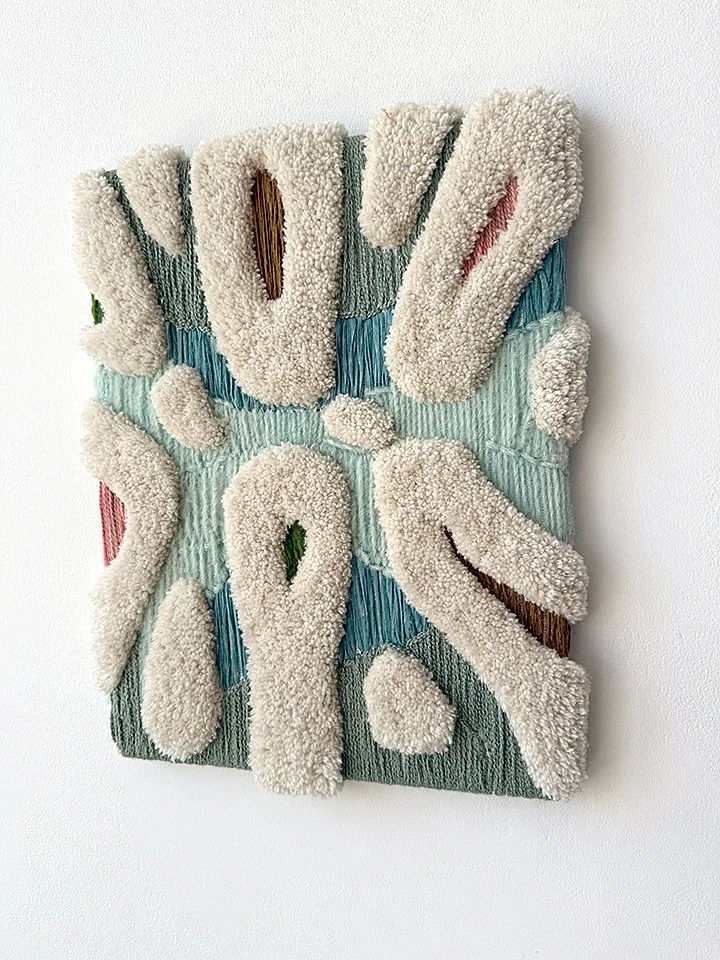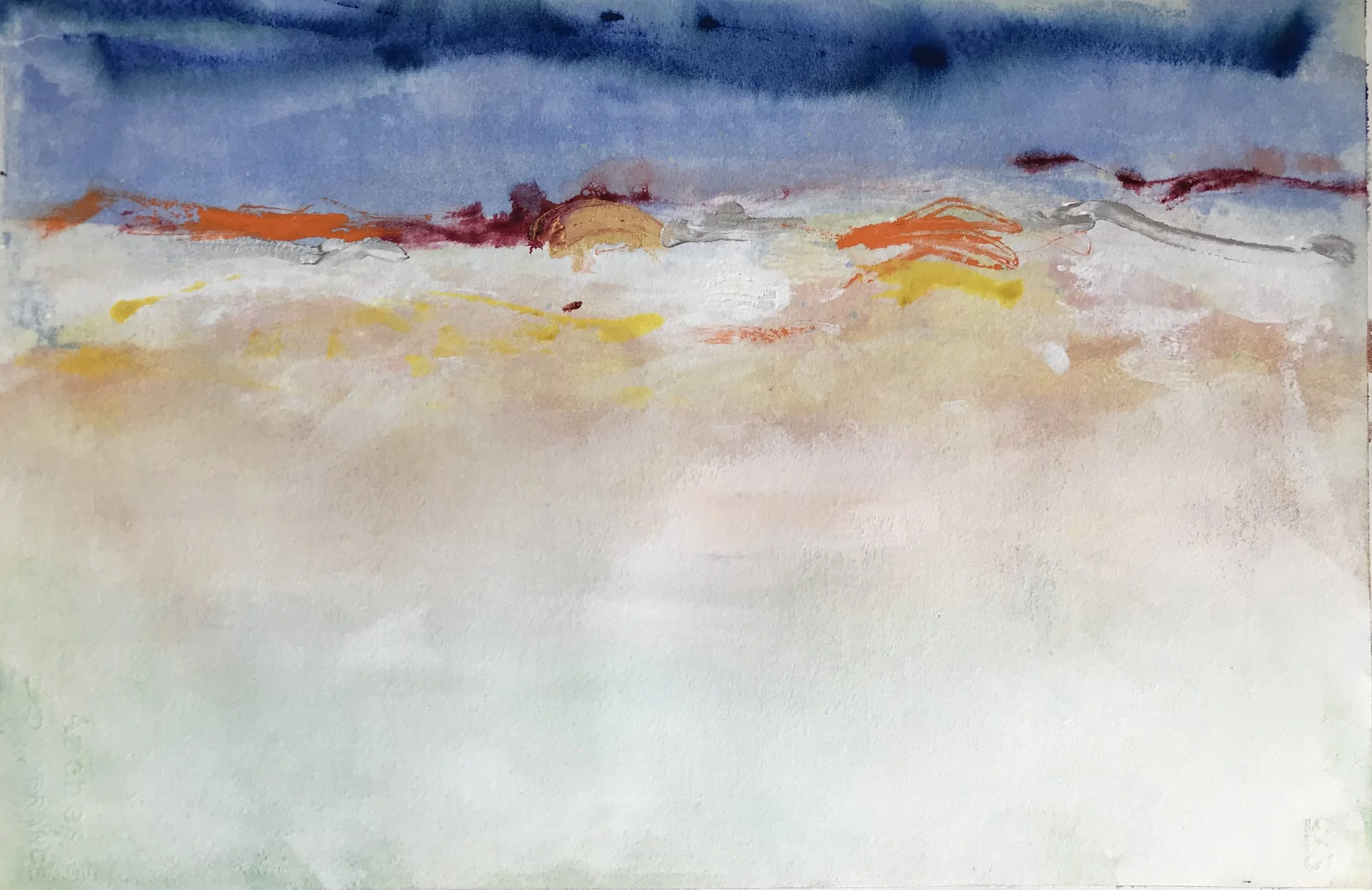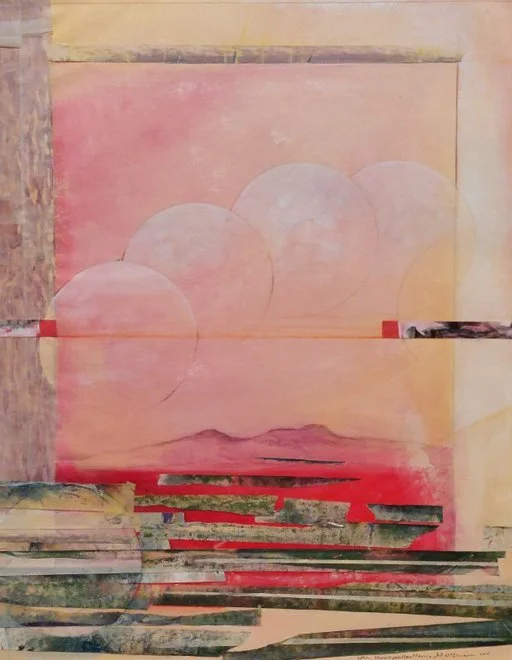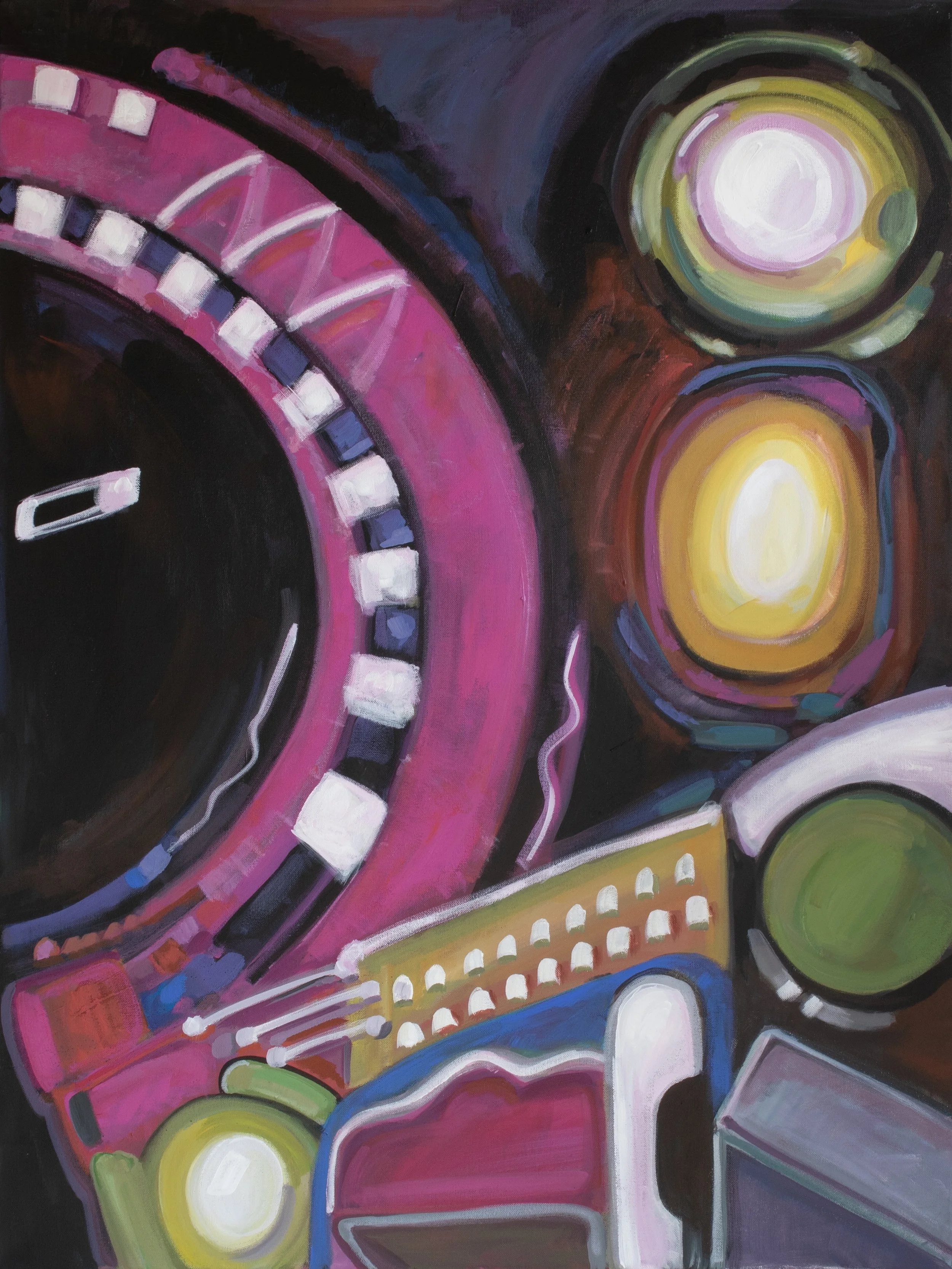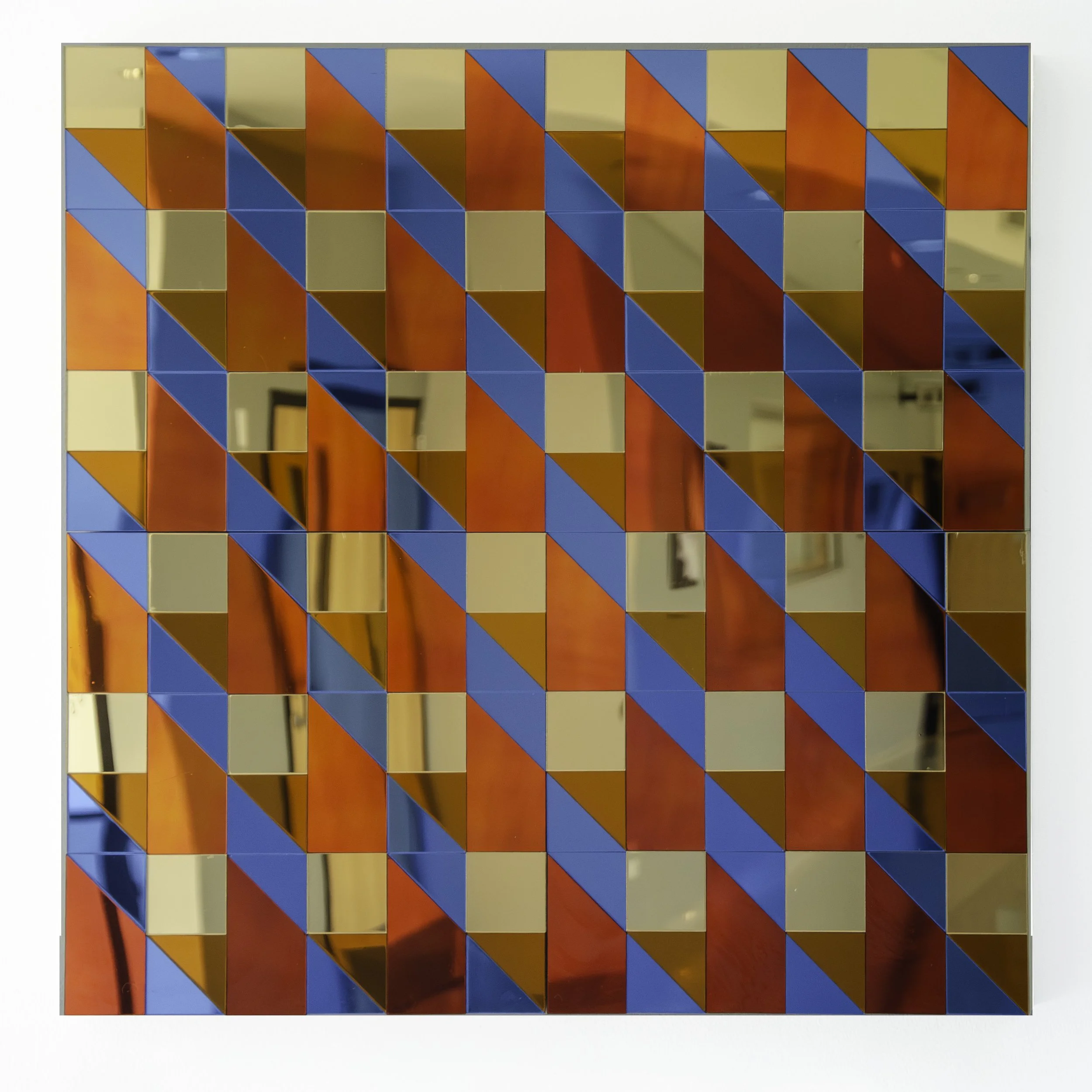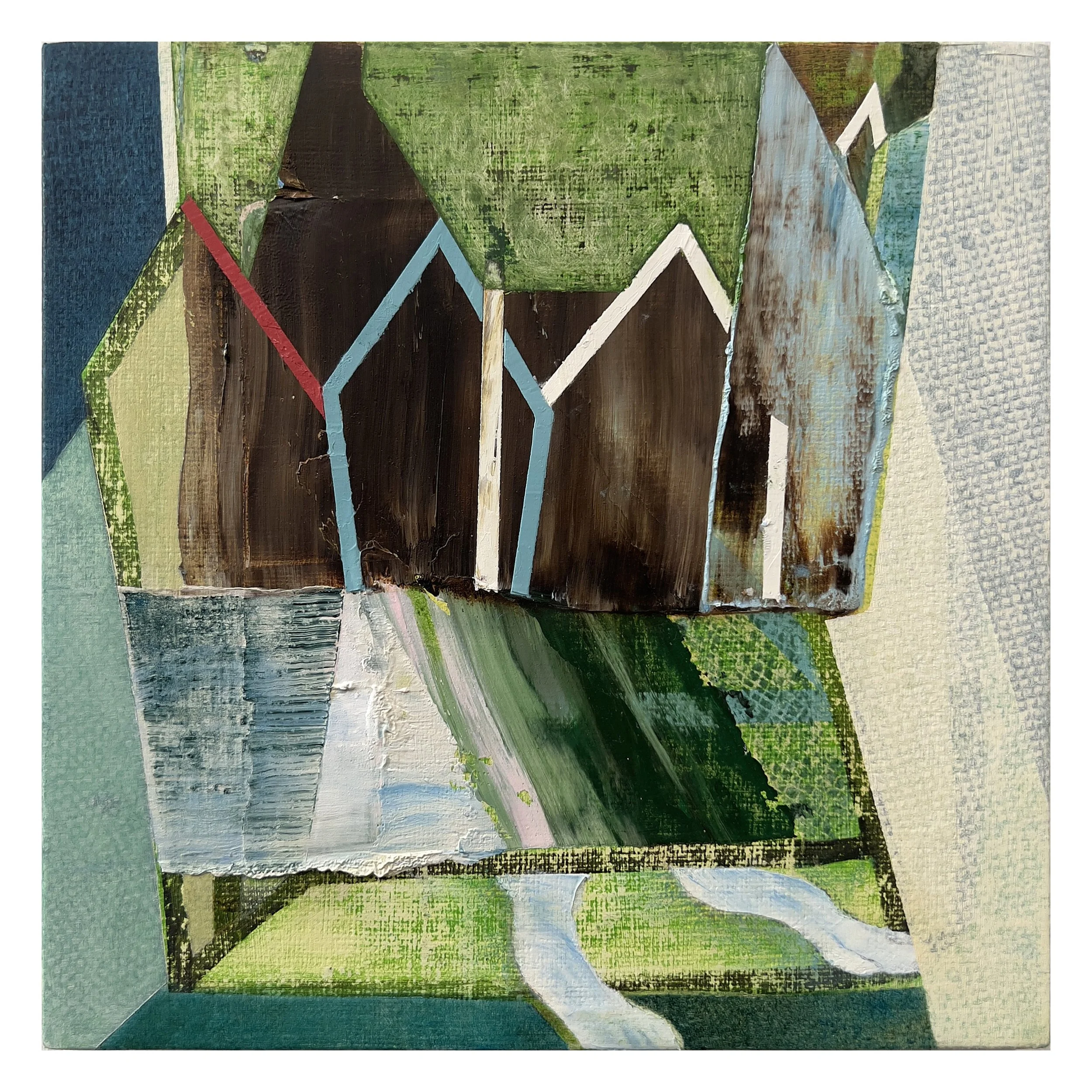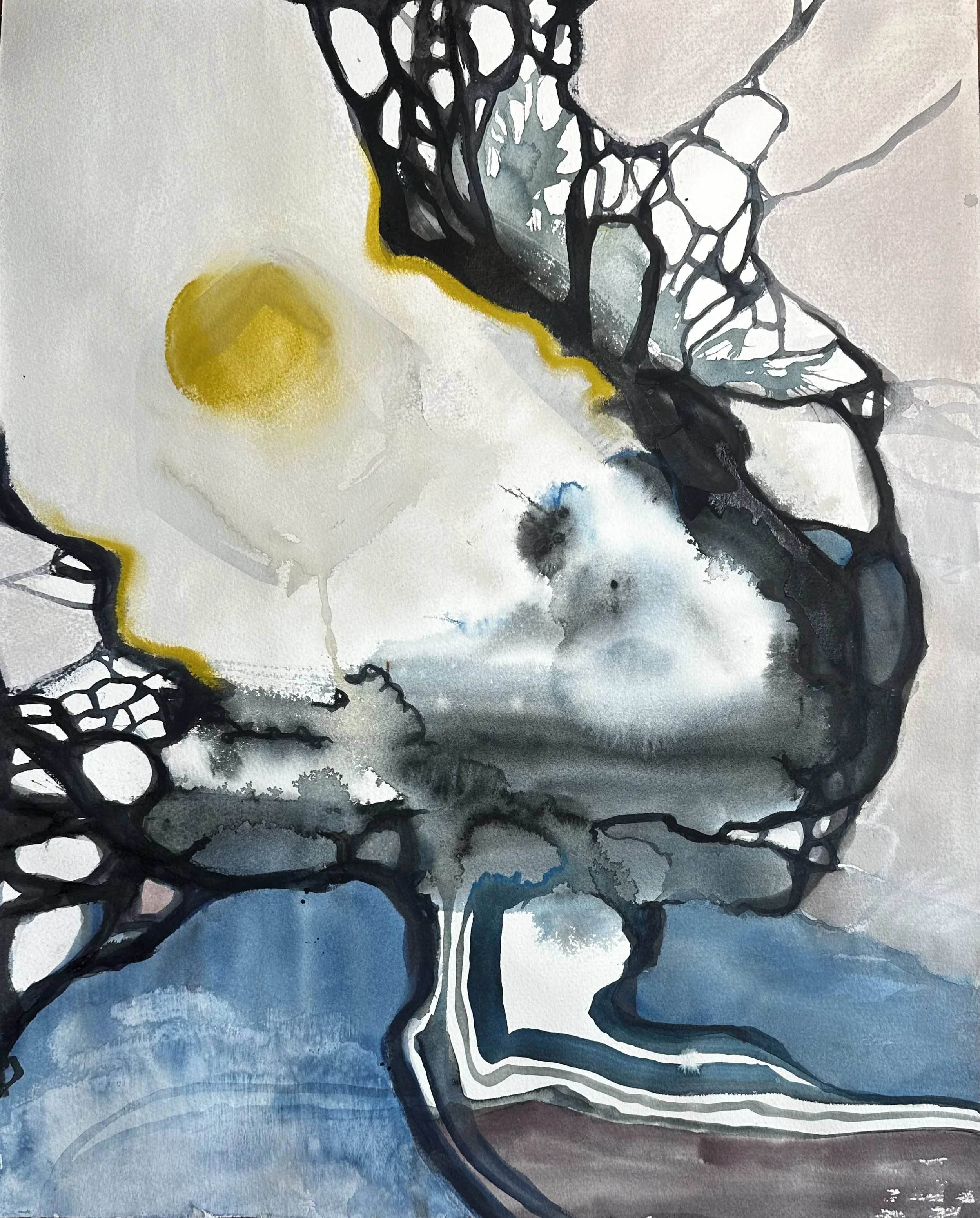MORE THAN MEETS THE EYE:
Abstract Alternatives to Depicting Our World
Exhibition Juror: Sheri Rush
Abstract art transcends the boundaries of representation, embracing a spectrum that ranges from rigorous geometric forms to bold expressionistic gestures, from conventional media to innovative assemblages of found materials.
What unites these diverse approaches is a shared commitment to revealing the unseen—to excavating meaning beyond the realm of immediate perception.
This national juried exhibition features artists who draw inspiration from the profound and the mysterious: the revelations of quantum physics, the inquiries of metaphysics, the depths of spiritual experience, and the elegance of pure formal design.
We are proud to present works that challenge viewers to look deeper, think differently, and experience art as a gateway to understanding and dare to make the invisible visible and transform the ineffable into visual poetry.
EXHIBITING ARTISTS
Anna Bretschneider, Sheryl Nieman, Peter Pawinski, MJ Keitel, Salvador Campos, Richard Sensenbrenner, Jennifer Linton, ZVMike the Artist, Alex Wilson, Eden Berke, April Behnke,
Rudy DeRam, Teresa Rozanacki, Geoffrey Roupas, Christine Steyer, Susan Slogoff, Dana Major, Betty Wolff, Patrick Miceli, Angela McElwain, Ana Vitek, Shawn Calvert, Julie Carpenter,
Eva Smith, Jonathan Pruc, Jennifer Amadeo-Holl, Crystal Beach, Terry Clarbour, Maria Gedroc, Lisa Calvert, Bowie Dauner, Marion Sirefman, Katherine Nemanich, Jill Obermaier

Anna Bretschneider, Untitled (line study III) “How is it at all possible to grasp a substance as such—that is, to grasp its substantiality?” —Heidegger, Being and Time (1962) Through practiced inquiry, I aim to sense what has yet to take form—what has not yet come out to play on the material. My process invites an external response shaped by inner awareness and reflection, tuned to what is not yet fully present, but might be. I seek essential visual form by organizing interrelated variances—possibilities unfolding through tension and resonance. The charcoal line becomes both impulse and structure. Its dynamic movement across paper is the collaborative field in which I situate myself—reaching, perhaps, toward the grasp of essential substance. Anna M. Bretschneider, June 2025
Sheryl Nieman, Surfin' I am a painter working in oils and acrylics. My canvases are chosen to compliment the story being told and have varied from linen, muslin, board, and glass to walls, ceilings, floors, and objects. My personal style is what I like to call abstract impressionism. Drawn to the impressionist style, the use of dots and dashes, the studies of color and light, I have completed many personal paintings as well as commissions. My current style of painting is a more obvious division of space, no longer a dash or a dot but a fragmentation using line and flow to divide areas of color. The effects of color and light are still examined and explored to create the appropriate mood of the story.
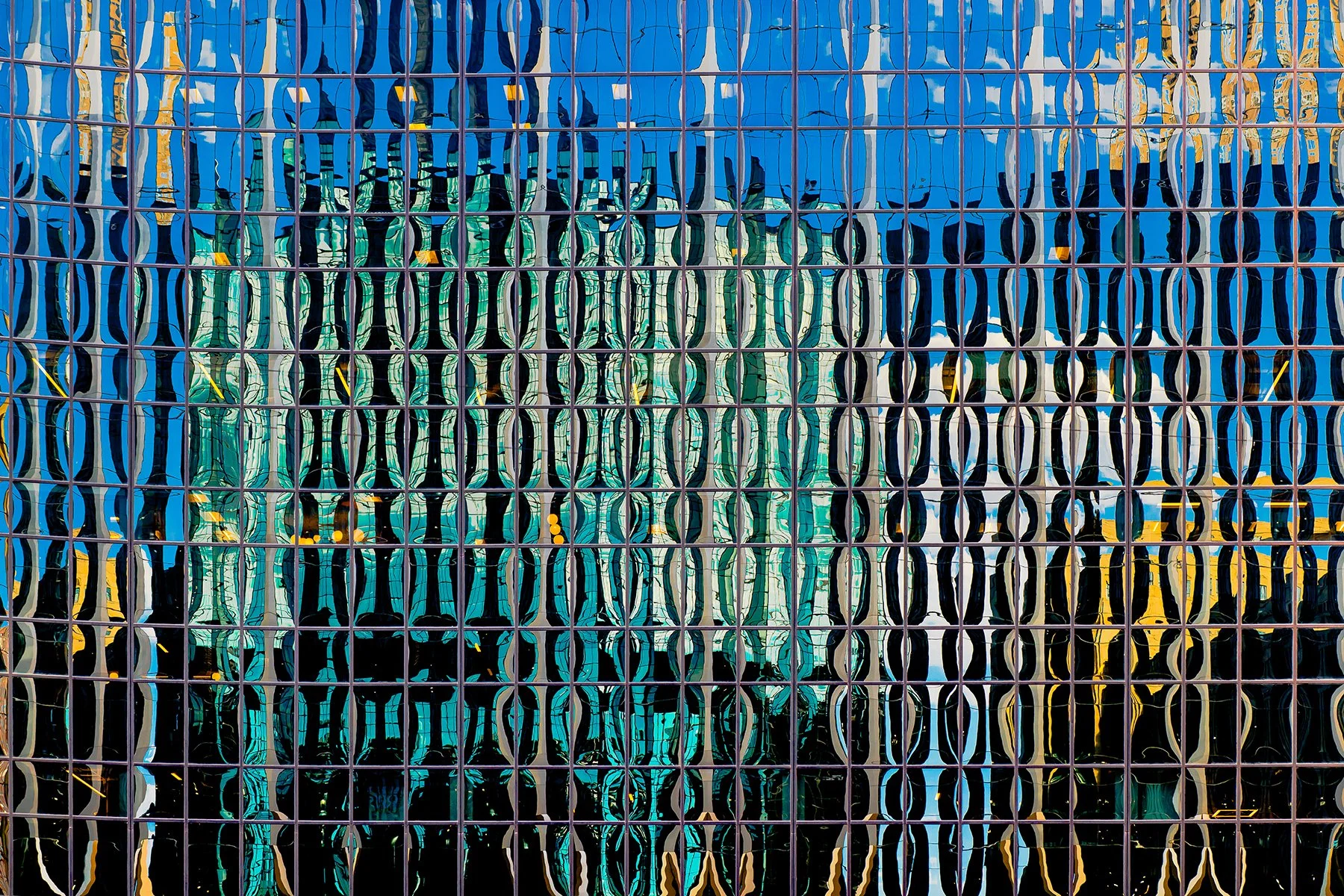
Peter Pawinski, Palimpsest Transliminal, is what I call that space between what a building is and how it's perceived; when architecture stops being literal and starts becoming something else. That's where my eye goes. Most of this work comes from walking around Chicago, a city I've lived with long enough to know its shapes, but not so long I've stopped being surprised by them. I crop in close, not to obscure, but to focus. I'm interested in what happens when a reflection throws everything off just enough to feel new. These images are less about documenting buildings than about letting them collide, vibrate, and rearrange into something quieter, more like a composition than a record. Transliminal is that threshold: a space where the city, just for a moment, feels unfamiliar in the best possible way. pawinskiphotography.com/architecture

MJ Keitel, Ode to Roofing Material My collages represent impermanance in both natural and human-built landscapes. "Ghost Flowers" merely suggests flora amidst a verdant mix of vibrantly colored gel printed papers. Seasonal impermanance and the potential for species to disappear entirely from the landscape co-exist. "Ode to Roofing Material" I found this irredescent shred of roofing material, (upper right) lifted off somebody's house, among my backyard flowers. Light & dark colors, positive/negative images and swirling shapes remind us that even the most industrious efforts to moderate the relationship between humans and nature have limits.
Salvador Campos, Bumble Bee I think that abstract art allows/forces us to view the world differently. The three paintings I submitted are attempts to capture my internal feelings at the time of their creation.
Richard Sensenbrenner, Untitled 137 I photograph the distressed surfaces of Chicago alleys and beyond discovering abstract images within them.
Jennifer Linton, Gathering Jennifer Linton’s work is rooted in loom weaving but has moved into a practice that binds together fiber in increasingly unique methodologies. What started as functional craft has moved to purely artistic realms that explore themes of the natural world, manmade and natural systems, and interconnectedness. Abstraction of elements from a plethora of origins — often flora and fauna — challenge us to see the macro and micro around us with works that often have deep hidden meaning.
ZVMike the Artist, In the Year of the Dragon ZVMike is a subconscious expressionist exploring the mind in vibrant compositions. Their work uses symbolism to tell the story of a broken person trying to put the pieces back together. Their work can be found and sold online at VibrantCast.
Alex Wilson, #10 Reimagined Alex Wilson is a Chicago artist, designer and producer. He studied painting and printmaking with a focus on artists books at the School of the Art Institute of Chicago. His style ranges from abstract to illustrative, working in several different mediums. He is a bookmaker and publisher of his own work and other artists. His work focuses on the metaphysical with a strong use of iconography that invokes the power of language and symbols. He draws on themes of mythology, religion and philosophy, often referencing art and iconography from throughout history. Alex is the Founder and Executive Director of West Town Bikes, a non-profit community bike shop offering youth programs, adult classes and community events since 2004. He’s also a member of Agitator Artist Collective since 2022.
Eden Burke, Dancing Lady Through mark making, I explore the inextricable connection between our bodies and the universe. Looking up at a tree on a sunny day, you can see the intricate, dark wood, or you can see trillions of cells. Looking at your grandmother dancing, you can see the entire universe shimmying within her. The organic shapes in my work attempt to depict more than what meets the eye - the particles that make up the universe of which we are a part. The trees we pass daily, the galaxies above us, and the cells in our bodies are all reflections of one another. This study of microcosm-macrocosm relationship is influenced by my bodywork practice as well, as my education and treatments have required me to visualize the body’s landscape on a cellular and energetic level. Depicting what is deeper than surface appearance, my abstract explorations encourage the viewer to acknowledge the spiritual essence and interconnectedness of all things.
April Behnke, Whack-a-Mole My work investigates perception through abstraction. I am interested in how we use patterns to make sense of the world, and how interrupting those patterns challenges that process. Each painting begins with layered structures that establish order, which I then disrupt with opaque shapes, shifts in color, and reversals of foreground and background. Rather than depicting recognizable subjects, I focus on how vision itself works—how the eye searches for coherence, how it reacts to interruption, and how perception can be unsettled. My process balances planning with improvisation: while the first layers provide structure, later choices respond directly to what emerges on the canvas. The result is work that asks viewers to look actively, creating tension between stability and uncertainty and inviting them to reconsider how they interpret what they see.
Rudy DeRam, Tazzo Zen Within the tangled universe of our mind and body, there can exist a core element, a controlled space. It can focus our inner energy... if we choose.
Teresa Rozanacki, Red To create digital images. I use computer graphic program. I manipulate my photos using Photoshop to turn simple images into works of arts.
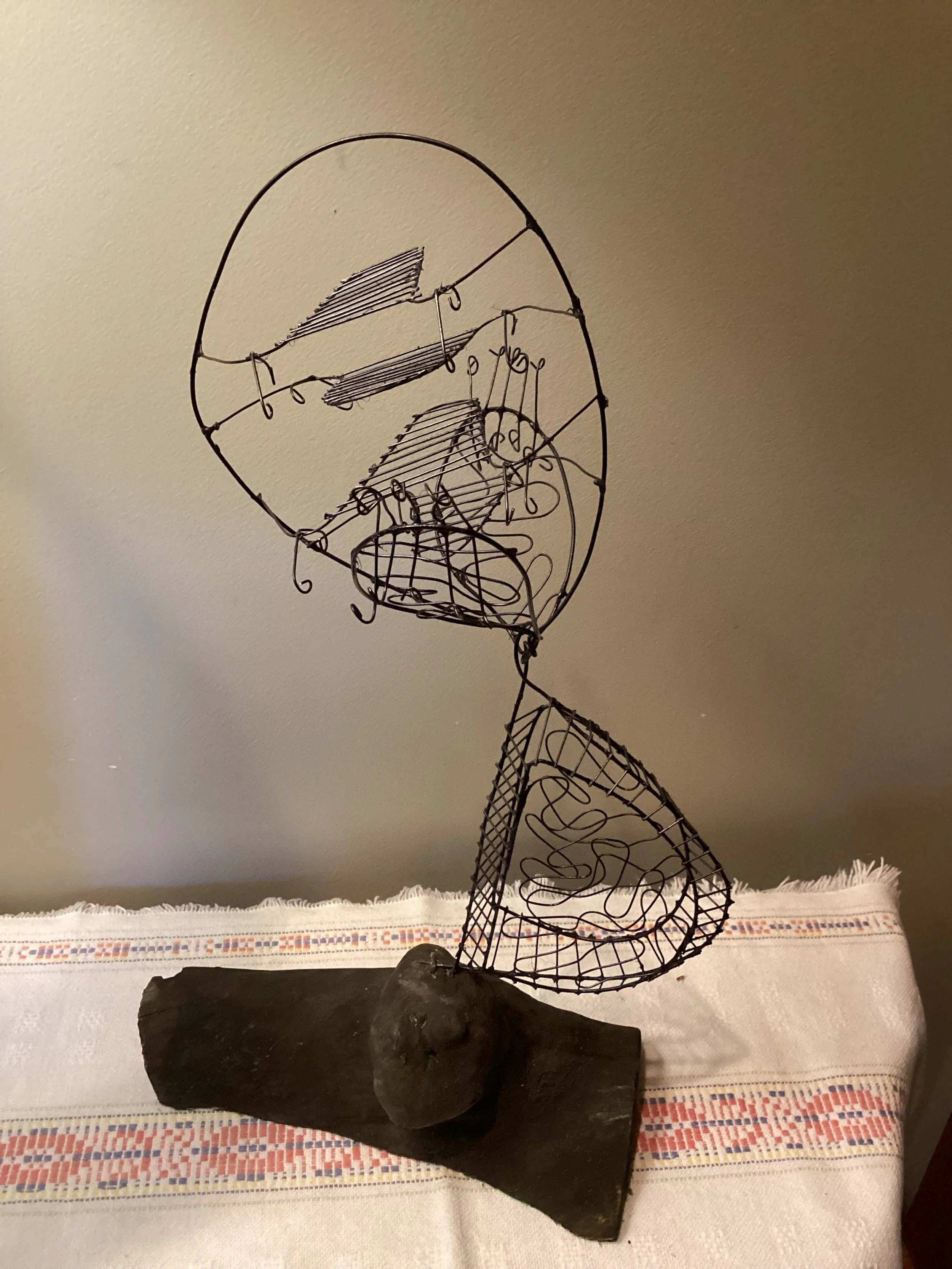
Geoffrey Roupas, Arboreal Personage No. 37

Christine Steyer, Woven Form #1 Paper has always fascinated me. Across cultures, whether handmade in India, Japan, or Africa, or infused with flowers, dyes, and pigments, paper carries a rich history while remaining remarkably ordinary. Even the most functional sheet, whether meant for wrapping, writing, or printing, can hold a quiet mystery, both fragile and resilient. What inspires me most is its versatility. Paper can be cut, folded, torn, rolled, or bent; it adapts effortlessly, suggesting endless new forms. It is supple yet strong, familiar yet full of surprise. This exhibition focuses on weaving with rolled paper. By combining two types, one heavier and darker, the other thinner and lighter, I explored how contrast and rhythm emerge from material itself. The weave produced shifting effects: shadows and openings, density and lightness, tension and release. The work is less about achieving a single outcome than about allowing the material to speak. The woven surfaces become a meditation on duality, balance, and transformation. They ask us to see the hidden potential in something as everyday as paper and extend an invitation to rediscover wonder in the ordinary.
Susan Slogoff, Yellow & Black on Red At the heart of my art making is a dance going on between control & chance. I encourage this tension by starting my paintings without drawings or plans. As a result the paintings, which are created on separate panels, change drastically as I work on them, and often combine together to finally create a single piece. This way of working teaches me to embrace the unexpected. Not only in my art, but also in my personal life & world view. It’s made me more optimistic in the face of uncertainty. I’m influenced by the history of abstract painting & graphic design, but also use techniques (layering & masking) that come from my years as a screenprint artist & instructor. I also often utilize computer programs when finalizing a piece, to test out compositions so I that I won’t lose areas that would be hard to repaint. I spend excessive time creating hard-edge shapes & patterns; you feel that control when you look at my work, but you also sense spontaneity in my loose brushwork. My paintings are a series conversation about pattern, shape, space & color, and my other work in ceramics, drawing, & screenprinting also reflect these interests.
Dana Major, Lady My interactive light installations investigate how perception creates reality. Studio-made LEDs, repurposed glass, reflection, shadow, and lensing explore the surprise of worlds beyond what we usually see. The lenses of microscopy and astronomy show patterns and processes that, bound up with the inherent limitations of ways of seeing, come to be called reality. I am interested in the analog aspects of light that were available prior to the Digital Age. Sir Isaac Newton founded light science from candles, sunlight, and crystal prisms, repositioning himself and his experiments as the sun moved throughout the day. My work brings an opportunity for slow observation of lights we see, but don’t notice, every day. There are no computers, digital programming, nor projectors in my work. The movement of light is analog, directly related to the real space, for example a lens sways because of air movement overhead. I fabricate my own light emitting diodes at the soldering table to control color and intensity. When the light leaves the emitter, it goes to me to lens, colorize, and move, and not to a computer that is limited to the parameters of its manufacture. This is slow light, at the pace of the human.

Dana Major, Indulgence My interactive light installations investigate how perception creates reality. Studio-made LEDs, repurposed glass, reflection, shadow, and lensing explore the surprise of worlds beyond what we usually see. The lenses of microscopy and astronomy show patterns and processes that, bound up with the inherent limitations of ways of seeing, come to be called reality. I am interested in the analog aspects of light that were available prior to the Digital Age. Sir Isaac Newton founded light science from candles, sunlight, and crystal prisms, repositioning himself and his experiments as the sun moved throughout the day. My work brings an opportunity for slow observation of lights we see, but don’t notice, every day. There are no computers, digital programming, nor projectors in my work. The movement of light is analog, directly related to the real space, for example a lens sways because of air movement overhead. I fabricate my own light emitting diodes at the soldering table to control color and intensity. When the light leaves the emitter, it goes to me to lens, colorize, and move, and not to a computer that is limited to the parameters of its manufacture. This is slow light, at the pace of the human.

Betty Wolff, Blue Suit State of the Nation Series
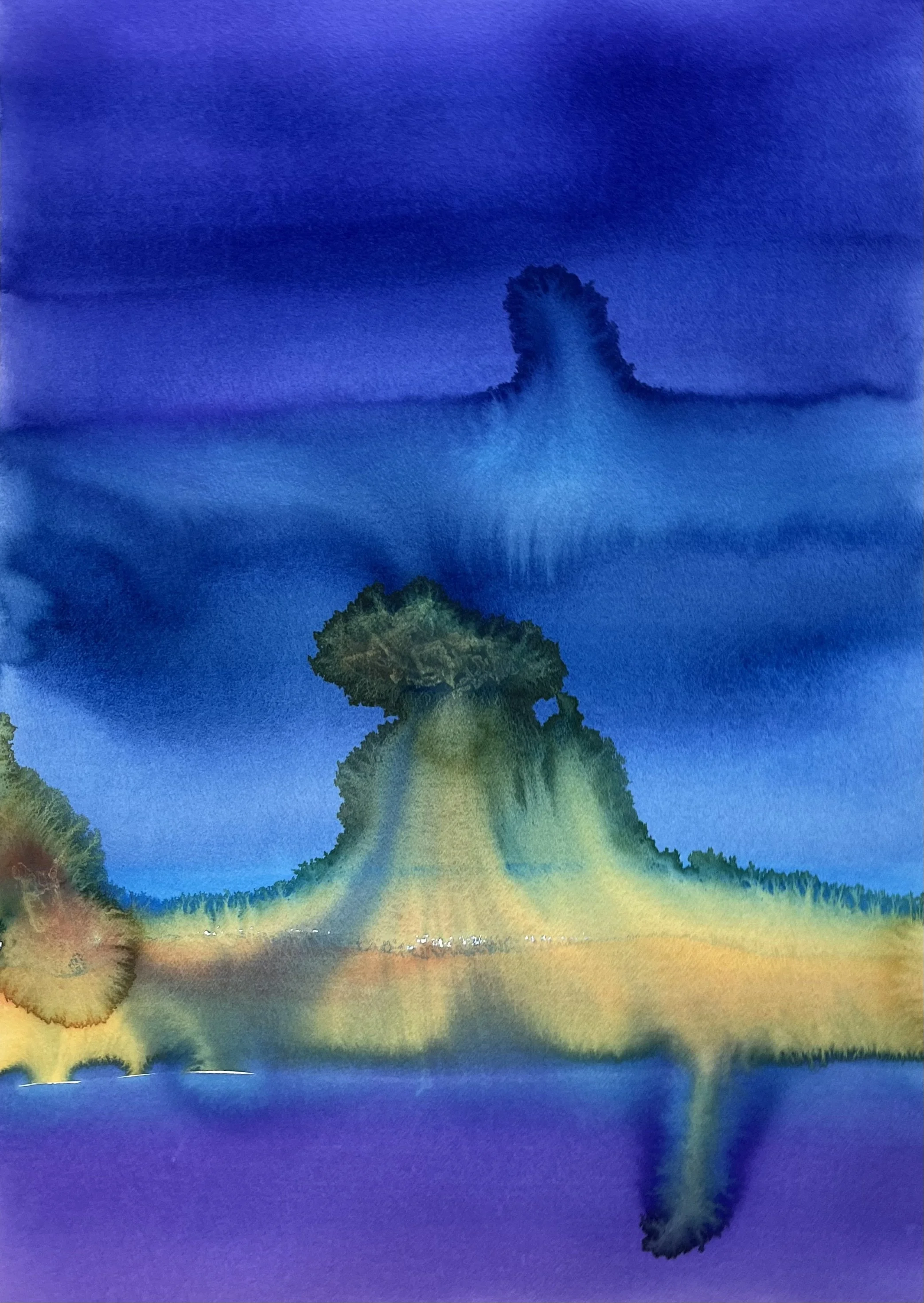
Betty Wolff, Peligroso State of the Nation Series
Patrick Miceli, Mist over the Meadow This body of work draws upon my memories of boyhood places I roamed in the wilds of Wisconsin. My memories were about the sunset and rises over the Little Wolf river and hidden swimming holes the meadows hidden among the pine trees. The images I have depicted here are drawn not from real life but from the imagined places inspired by boyhood memories.
Angela McElwain, Moon Over Santa Fe My work includes drawing, painting, collage, assemblage, photography and printmaking. Through these different mediums, I investigate freedom, power, oppression, cultural expectations or metaphysical inquiries in a poetic and compelling way. Each piece articulates a sense of personal, environmental, social, or political disquiet expressed here as an abstraction. The work often evokes irony and/or transcendence through the use of iconographic symbolism, dynamic design and color. When I create a piece, my intention is to captivate the viewer, inviting them into an experience of exploration. Landscapes are abstraction with content, that is, the subject is intentionally treated in a visually loose and unfettered manner whilst still retaining a sense of society, place and action. The color palette suggests a psychological or emotional synergy between the imagined participants in the perceived activity.
Ana Vitek, Harmonia West My work is an expression of the energy and emotions embodied in places and points in time: energy and emotions that are often fleeting and transitional. Often representing the transition between specific states, decisions or actions, such points in time embody the hope of possibility of situations that have yet to happen or echo with the energy of interactions that just happened. My painting process takes many hours, researching, taking reference photos, and doing initial sketches, then transferring onto canvas or wood panel, building the composition with layers of paint, working to capture the energy of a moment in time on the canvas, and capture the feelings of that fleeting moment. I love to paint using oil and acrylic and also to experiment with Encaustic, Hand Felting and Wax Resist Techniques. The energy of the world around us fascinate me, the mesmerizing colors of sunlight , energy, and light in darkness. The duality of calm and movement intrigues me. . I’m particular I am fascinated by windows, and doorways, movement, and escapes.
Shawn Calvert, untitled (25-12)
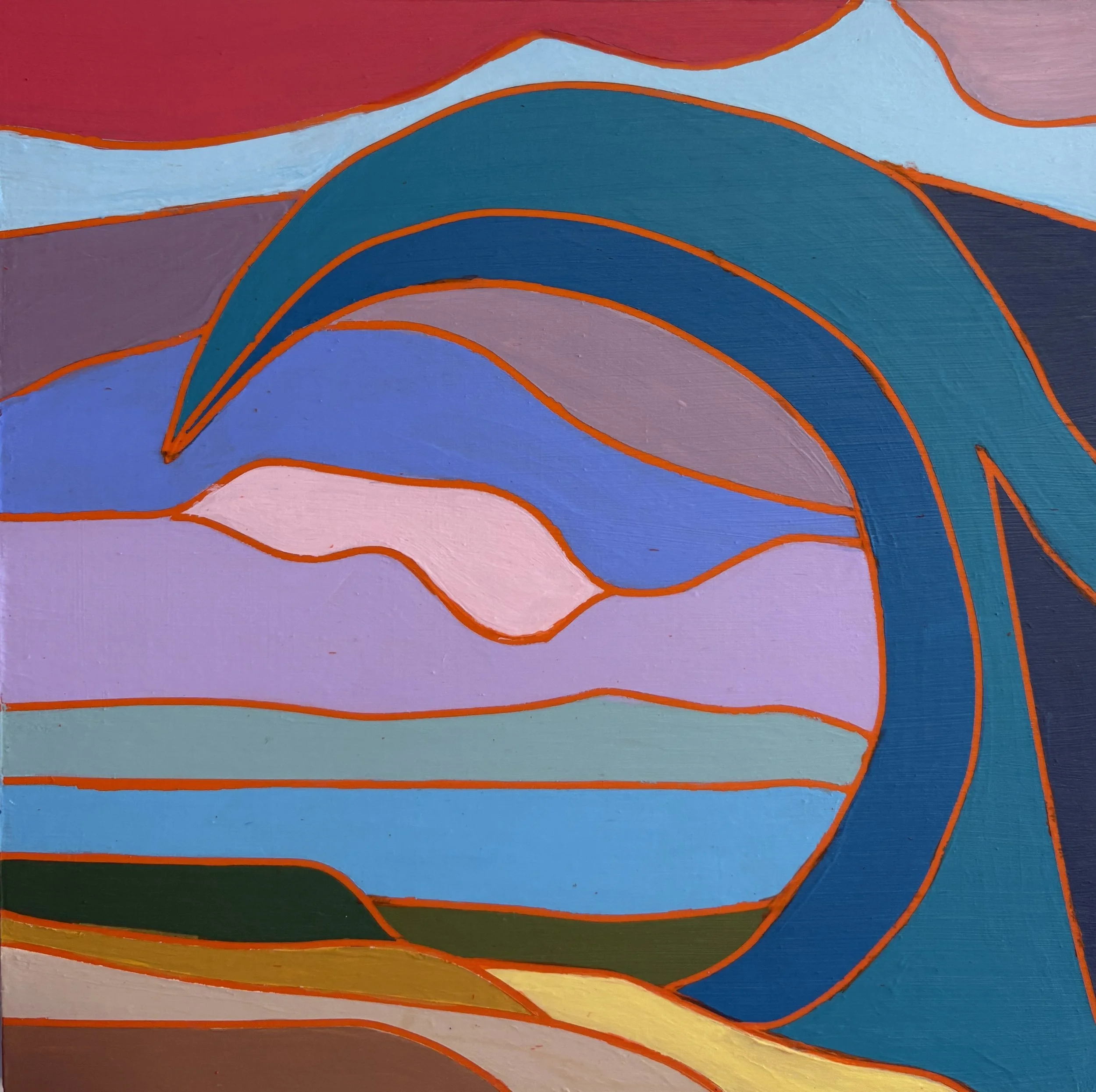
Julie Carpenter, Rising Tides I My practice is rooted in past career work in drafting, where precision, line, and spatial clarity were practiced to perfection. That technical foundation now informs my process, where controlled line work lends structure to painted portals of an increasingly turbulent natural world. As a lake swimmer, I experience the impact of climate change firsthand—beach erosion, elevated lake levels, and the shifting shoreline are constant reminders of nature’s vulnerability. These observations shape my visual language, where order and instability coexist. Each painting from my Rising Tides series begins with a bold underlayer, evocative of nature’s force—its undulating movement, its unpredictability, its quiet power. Over this, I apply controlled line work, a vestige of my drafting background. Color plays a vital role in this dialogue, with some applied directly from the tube, bold and unfiltered, while others are mixed to create harmony, subtle transitions, or imperceivable boundaries between land, sea, and sky. Through this practice, I explore the tension between control and surrender, inviting viewers to reflect on our complex human relationship with the environment.

Julie Carpenter, Rising Tides II
Jonathan Pruc, Big Questions, Simple Answers My practice is rooted in past career work in drafting, where precision, line, and spatial clarity were practiced to perfection. That technical foundation now informs my process, where controlled line work lends structure to painted portals of an increasingly turbulent natural world. As a lake swimmer, I experience the impact of climate change firsthand—beach erosion, elevated lake levels, and the shifting shoreline are constant reminders of nature’s vulnerability. These observations shape my visual language, where order and instability coexist. Each painting from my Rising Tides series begins with a bold underlayer, evocative of nature’s force—its undulating movement, its unpredictability, its quiet power. Over this, I apply controlled line work, a vestige of my drafting background. Color plays a vital role in this dialogue, with some applied directly from the tube, bold and unfiltered, while others are mixed to create harmony, subtle transitions, or imperceivable boundaries between land, sea, and sky. Through this practice, I explore the tension between control and surrender, inviting viewers to reflect on our complex human relationship with the environment.
Jennifer Amadeo-Holl, Relating to the Rabbit These paintings are little inquiries into the puzzles of existence. They utilize the intimacy of the small scale, where image and emotion may more quickly fuse, and where the restricted size of the picture plane may present a world both limited and infinite by its very self-containment. They attempt to express, in a gentle human hum, that time feels both quick and deep, love eternal and fleeting, memory firm and faded, and the sublime present and remote. At one moment one has access to realms of the numinous, at other times life presents as an assemblage of hard facts and suffering. We exist in connection to others, but slip into alienation. It is a wonder that an invented image, a bit of reformulated matter, speaks at all to another human being. And yet, we all see creatively and live within and through an interpretation of the world. Slices of perception reach out: the language of colors, intimations of shared experiences, of symbols and shapes giving rise to memories and emotions. I hope these paintings speak to the varieties of human experience, and find form for something meaningful and magical to another human mind.
Jennifer Amadeo-Holl, Tomb These paintings are little inquiries into the puzzles of existence. They utilize the intimacy of the small scale, where image and emotion may more quickly fuse, and where the restricted size of the picture plane may present a world both limited and infinite by its very self-containment. They attempt to express, in a gentle human hum, that time feels both quick and deep, love eternal and fleeting, memory firm and faded, and the sublime present and remote. At one moment one has access to realms of the numinous, at other times life presents as an assemblage of hard facts and suffering. We exist in connection to others, but slip into alienation. It is a wonder that an invented image, a bit of reformulated matter, speaks at all to another human being. And yet, we all see creatively and live within and through an interpretation of the world. Slices of perception reach out: the language of colors, intimations of shared experiences, of symbols and shapes giving rise to memories and emotions. I hope these paintings speak to the varieties of human experience, and find form for something meaningful and magical to another human mind.
Jennifer Amadeo-Holl, Geometry of Miracles These paintings are little inquiries into the puzzles of existence. They utilize the intimacy of the small scale, where image and emotion may more quickly fuse, and where the restricted size of the picture plane may present a world both limited and infinite by its very self-containment. They attempt to express, in a gentle human hum, that time feels both quick and deep, love eternal and fleeting, memory firm and faded, and the sublime present and remote. At one moment one has access to realms of the numinous, at other times life presents as an assemblage of hard facts and suffering. We exist in connection to others, but slip into alienation. It is a wonder that an invented image, a bit of reformulated matter, speaks at all to another human being. And yet, we all see creatively and live within and through an interpretation of the world. Slices of perception reach out: the language of colors, intimations of shared experiences, of symbols and shapes giving rise to memories and emotions. I hope these paintings speak to the varieties of human experience, and find form for something meaningful and magical to another human mind.
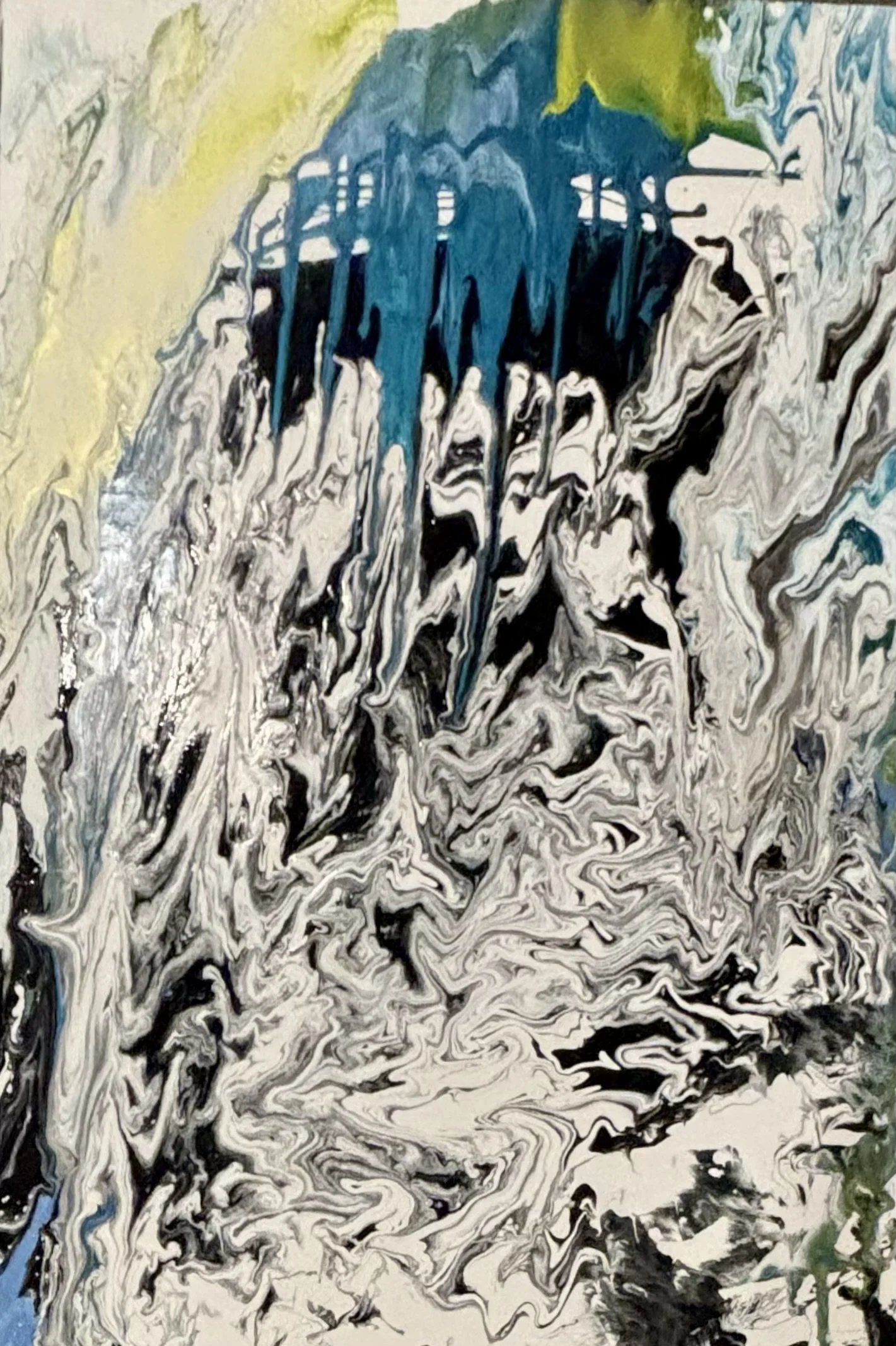
Crystal Beach, Impenetrable I have been practicing art for over 30 years. My inspiration comes from nature, primarily. I work in a variety of mediums, including oil painting, acrylic paint, watercolor paint, welded metal, ceramics and photography. I have been in 14 group shows, including St. Charles Arts Resource Center, Vogt Visual Arts Center, the Beverly Arts Center, Moraine Valley Community College’s gallery, MCCord Gallery and I am a member of the Naperville Art League.
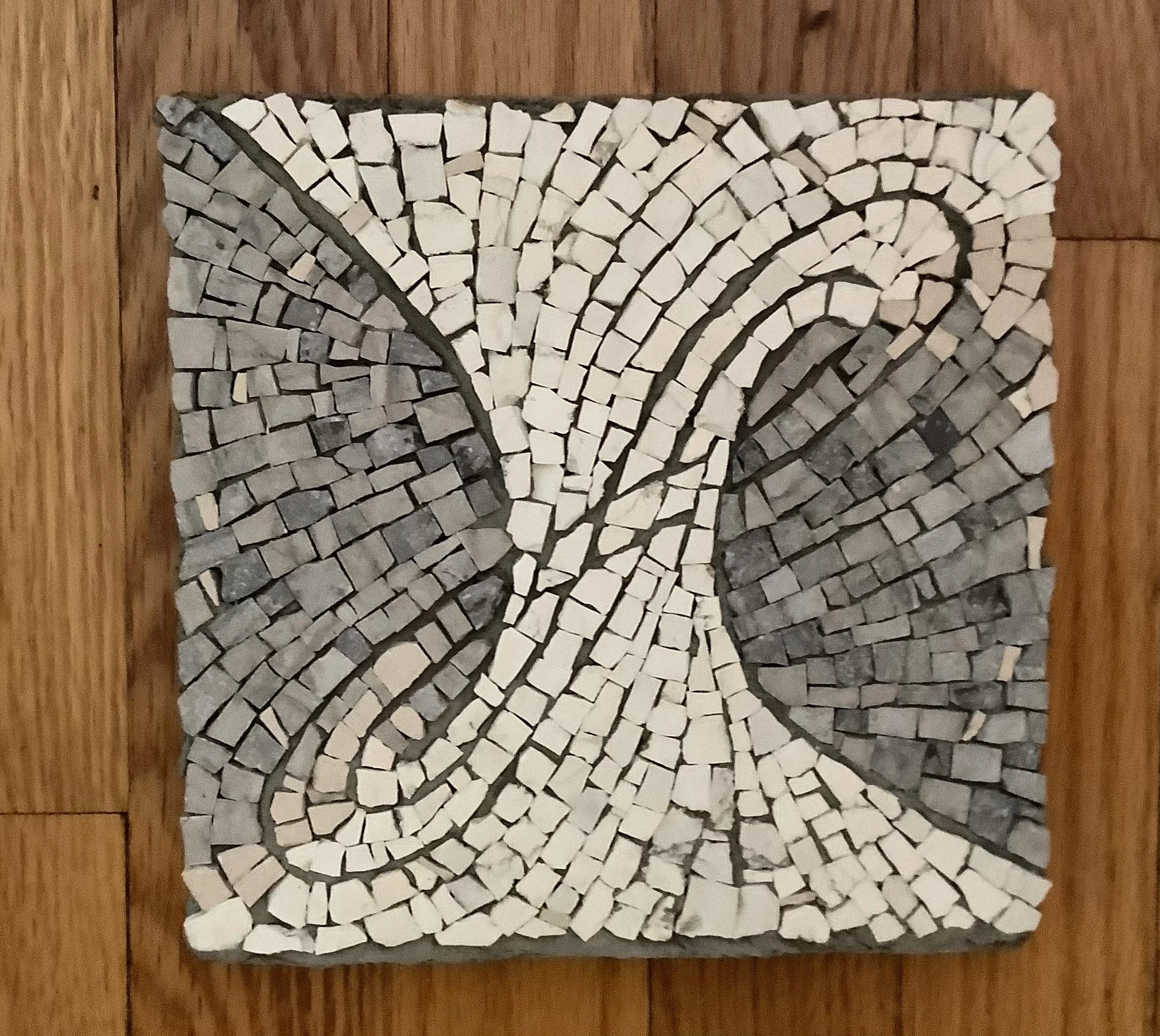
Terry Clarbour, Vortex III I have been exploring the concept of the Vortex, which is so relevant for our times, it seems that we are in a whirlwind. I use salvaged materials and these three works are created from my own beloved shattered porcelain, from salvaged stone and from flooring samples rescued from landfill
Maria Gedroc, Bioluminescent Garden In this series of mixed media art, I create various one-of-a-kind acrylic prints and then mix them with a multitude of handmade collage papers, many created with a geli-plate, to create beautiful and unique layered and dimensional art.

Lisa Calvert, Day Flows into Night

Bowie Dauner, I am the person I've been waiting for “Introspection” is an ongoing series of tactile paintings that explore complex human emotions and connection through my experience with synesthesia. The goal of this series is to give form to the intangible elements of the human experience.
Marion Sirefman, Somewhere in Space
Katherine Nemanich, Altogether Now Working with wire, Katherine Nemanich draws with the wire itself so that it becomes the drawn line. Interspersed within the wire lines, she places calligraphic marks on transparent film, the two components becoming one gestural drawn and formed physical sculpture. Nemanich’s method with layering and transparency allows the painted marks to float literally in space. Her 3-dimensional works presented here include gestural ink or acrylic drawings on acetate film and layered cotton paper. These are embedded within sculptural constructions made of wire. Each work in its own way is a gestural and linear abstraction, a graphic activity existing in space. This graphic activity continually recreates itself as the viewer moves through and responds to the physicality of the lines and inhabits the space within and around.

Katherine Nemanich, Wired and Ready Working with wire, Katherine Nemanich draws with the wire itself so that it becomes the drawn line. Interspersed within the wire lines, she places calligraphic marks on transparent film, the two components becoming one gestural drawn and formed physical sculpture. Nemanich’s method with layering and transparency allows the painted marks to float literally in space. Her 3-dimensional works presented here include gestural ink or acrylic drawings on acetate film and layered cotton paper. These are embedded within sculptural constructions made of wire. Each work in its own way is a gestural and linear abstraction, a graphic activity existing in space. This graphic activity continually recreates itself as the viewer moves through and responds to the physicality of the lines and inhabits the space within and around.
Jill Obermaier, Golden
Eva Smith, Scaling Through art I study ecology and my place within it. I take inspiration from the floral, fungal and animal life forms around me, meanwhile researching interesting characteristics, adaptations and symbiotic relationships. These concepts and patterns then continue to shape what I create, resulting in a kind of feedback loop. This, combined with the unpredictability of watercolor and ink, sends me wrangling randomness and drawing connections. I aim to immerse myself and the viewer in the unnatural natural environments I create, my own personal science fiction.




